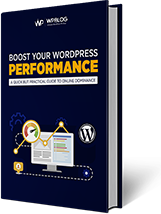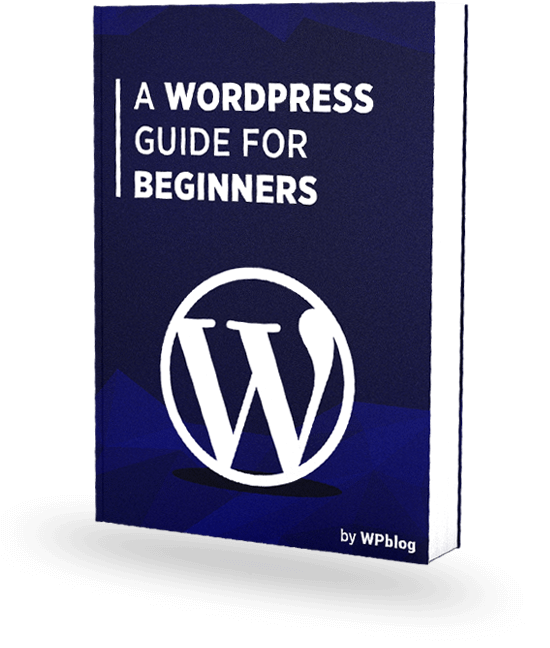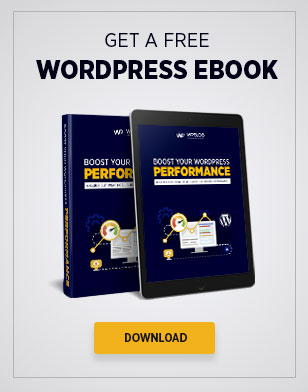Increasing Website Traffic Without Building Links or Adding New Content

There is no blog, website or a web-based resource that doesn’t want to boost its traffic from the search engines. And, I am sure you are reading this post with this same thought in mind.
Table of content
Well then, let’s learn how to achieve this.
Increasing your domain ranking with the help of link building is one bullet-proof way to do it. The second way is to add new content.
However, it’s possible to grow search traffic without having to do the above two.
In a moment, I’m going to show you how to do it through three secret recipes:
- At first, we will discuss “The Merger Method”
- Then pass over to filling gaps in existing content
- And finish with switching ‘main’ keywords
Are you ready to start?
1) ‘The Merger Method’ Or How To Increase Search Traffic By 50+%
Have you heard about ‘keyword cannibalization’? For those who are not sure what it is, the term means multiple pages available on your site that are targeting one and the same keyword.
Of course, it’s not that horrible, but the practice can hardly be called perfect SEO. This looks confusing to Google. It doesn’t know which page to rank and therefore splits link-equity across multiple pieces of content.
You can use the Merger Method to eliminate keyword cannibalization issues while boosting search traffic on the way. Let’s see how to implement the Merger Method.
Supposing you have several blog posts targeting the same keyword. All of them are decent, but one gets the biggest portion of Google traffic. So, nobody gets to see the other two posts.
The Merger Method can be called one of the best tactics to capture organic traffic quickly.
Here’s what you can do.
Combine 3 posts into 1 mega guide
By rewriting the guide from scratch and adding unique data, you get the best content for the keywords. Exactly, that’s the gist of The Merger Method.
Combine multiple pieces of mediocre content and create a superior resource on the web for your targeted keywords.
Redirect the old URLs
Now we approached the final step, which is 301 redirect of the old posts to the new URL. The process is simple, as you see.
The cool thing is that all 3 pages had already acquired some backlinks earlier. Before you applied the Merger Method, the link-equity was split three ways. Then, after combining the posts, all those links will be pointing to the article guide, making it a super-duper piece of content.
What you’ll get
At first, you will be happy with the traffic burst to your new guide. Just don’t forget to run through your regular promotion strategy. You’ll pick up a bag of social shares and fresh links. But your greatest achievement will be organic traffic boost by nearly 50% thanks to the Merger Method.
When should you use the Merger Method
Do you have multiple pages on your site targeting the same keyword? Then, consider combining them into one massive piece of content. Next, make sure you redirect the old URLs using the 301 redirect method to the new source.
As I have already said above, it’s a simple process, but that does not make it less efficient.
2) Boost Search Traffic By Filling Gaps In Existing Content
We write long articles containing thousands of words, send hundreds of outreach emails to get more backlinks and boost our organic search traffic this way. But sometimes we forget that traffic drawn by fresh content is not the only one available out there.
There is a simple trick to increase the traffic to existing pages without any link building at all.
Here are the steps you need to take to grow the page’s traffic by adding more content to it:
1) The first step is to identify existing keyword rankings. Find out for which keywords the page is currently ranking for and their positions.
Use your favorite SEO and marketing tools to get a report of all keywords where the page currently ranks in the top 100 results. Even if you see that your content was quality but wasn’t ranking high enough, look at it critically and you’ll find that there is much space for improvement.
You will know which keywords and key phrases the article was already ranking for and where is a need for improvement.
2) The second step is identifying the competition. Before starting to update your content, you must know what you are up against.
If you’re not ranking on the top spots, the chances are that there is a better piece of content than yours. You need to do a Google search for your targeted keywords.
Visit all pages in the top 10 results. Analyze their keyword position, placement and density to know which parts are better than yours.
Use the following guidelines:
- Answer the following question honestly: “Is your content’s quality “worse” than the one that ranks better?”
- Is your article long and well-researched enough?
- Which aspects of this content are not covered on your page?
- Which “user intent” queries are not answered by your content?
- How to make your content better than the one currently ranking?
- Can you use any stunning imagery, schemes or diagrams to supplement your content?
- Can you add any YouTube or other videos to add value to your content?
After getting all answers, iterate and do the above for all pages that are outranking yours. The first few might seem to be the hardest, but the rest will follow a similar pattern.
Unfortunately, there are no shortcuts. You’ll have to review all the pages outranking yours to make sure you leave no gaps.
3) Update your content so that it satisfied the user search query.
Once you’ve seen what you are up against, update the content as per the needs. To put it simply, your content must be better than the competitors. It also needs to answer the user search intent entirely. Just make it the best content available out there.
Supposing you have already analyzed your competitors’ content, so now you should have a clear understanding of what your content is missing. What do you want to do? You want to supplement your existing content with the additional content, but consider the followings before doing that:
- You don’t need to rewrite it completely or you will lose the precious content Google was ranking you for.
- Don’t start writing a new post and hope that it will rank better. This journey is much longer and harder than pushing up the content that already exists.
- Don’t change the URL.
Be sure that Google will reward you for your efforts. Use data from your competitive research to plan what to add or update. While studying the organic keywords you are ranking for, you might come across user search intent keywords you have no content for. Bear in mind that these queries are priceless, so make sure you are answering them.
Keywords are still important.
There is a heap of various information on the net about user search intent. We talk about it so much that you might think that keywords are not relevant anymore.That’s not true. Keywords still help Google understand what your content is about. Now ranking signals have changed, but don’t hurry up to rule keywords out.
Keywords still rule and that’s why I recommend using more keywords which you are already ranking for.
This is obvious: Use keywords which you are ranking for but have not reached the top rankings yet.
Use the keywords in headings and subheadings if it makes sense for the content, but avoid keyword stuffing.
Does using keywords headings make the content feel spammy? Try to use them in the content then.
It goes without saying that the lengthier and more in-depth the updated content is, the easier it will be to include a solid number of the organic keywords in it.
Add Engaging Content
Dwell time, which is also called ‘the long click’ is a ranking factor. And it’s becoming increasingly important to Google. In other words, Google would rank higher the pages users appear to be more engaged with. Recording the time spent on-site is one way a search engine can measure this engagement.
For Google, it would be the time between a user clicking a search result and returning to the search page.
What can you do to make visitors spend more time on your web page?
Here are some tricks:
Content length matters. Long engaging content will result in a longer time spent on page. Lots of studies, including Ahrefs’ 2m keyword study, have shown that longer content correlates with rankings.
Embedded media is also helpful. The embedded YouTube videos that relate, explain and demonstrate your content can help to increase time on page and make your content more engaging as well.
Interlinking — linking to other articles and encouraging exploration will help to increase time on site.
4. The fourth step is to give your content an extra kick
Here are some good ways you can use to lift your content a few positions upwards:
Write an enticing search title encouraging click-throughs. Google will give your web page higher rankings if your click-through rate from the search results is solid.
Don’t forget about the internal links. Internal links are so much easier to obtain than external links. You’re also in total control of the anchor keywords you want to use.
Get a fresh pair of eyes to take a look at your content. Use all possible channels: social media marketing, email blasts and all other methods of promotion. Be sure that this will send proper signals to Google.
When to use this strategy
This tactic can be successfully used for content focused on advice, tutorials, and other educational material. Repeat this exercise on a regular basis and you’ll notice a significant improvement in your organic search results [read get more traffic to your website].
3) How to increase search traffic by 50+% by switching ‘Main’ keywords on existing content
As I have already said above, analyzing your existing rankings and filling-in the gaps in your content can be a great way to raise your traffic. But there is always space for perfection.
For instance, you can completely switch out the main target keywords for some of the old articles. It includes changing the URL in many cases but can result in a 50+% organic search traffic increase.
Why could this happen?
Suppose that you run a high traffic website. Your site is multi-authored and the majority of its traffic comes from social media, so the keyword research is a little neglected part of the article, although it’s easy to do it with tools like Keyword Generator, for instance.
This actually means that you lose your opportunities to boost traffic and it’s time to make necessary tweaks.
How to do this
Change the targeting for tens of your existing pages. It’s OK that the search volumes on their own aren’t huge. You’ll see that this will lead to a nice rise in traffic.
You can also keep the same URL, but change the on-page to target a different keyword. Multiply this by a number of pages and it soon adds up. Traffic should also continue to increase as the pages grow older and move up the rankings for the new keywords.
When To Use This Strategy
This process is a great option when you want to draw extra traffic to pages that are not currently performing at their full potential in the SERPs.
When you implement it on multiple pages it can quickly lead to a considerable upturn in search traffic, which is especially prominent on large sites.
When Not To Use This Strategy
It’s not really a risky strategy, but if your page is already performing well in search, there is no need for its implementation.
Over To You
So, I told you about three strategies you can use to increase traffic on the website without building links or adding new content. Apply these and when you see fit, audit your content on regular terms looking for opportunities to improve your existing rankings further.
Remember that if you don’t, then you’re leaving traffic to somebody else who is quicker in implementing the above discussed strategies.
It’s your turn to kindly answer a few questions now:
Have you used these strategies on your own site?
Do you have any questions or insights you would like to share with the community?
Any feedback is welcome, so please leave a comment below!

Create Faster WordPress Websites!
Free eBook on WordPress Performance right in your inbox.










